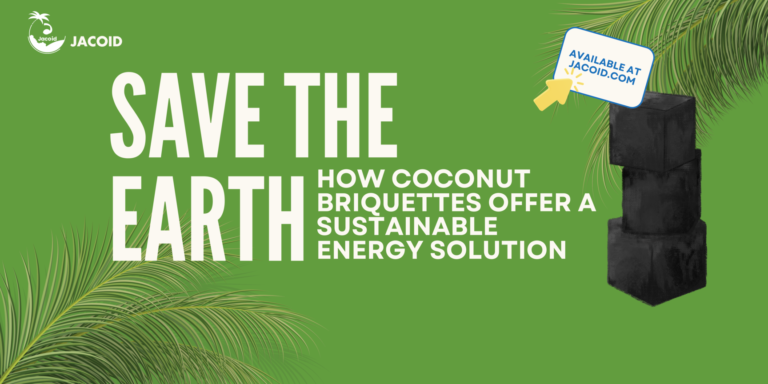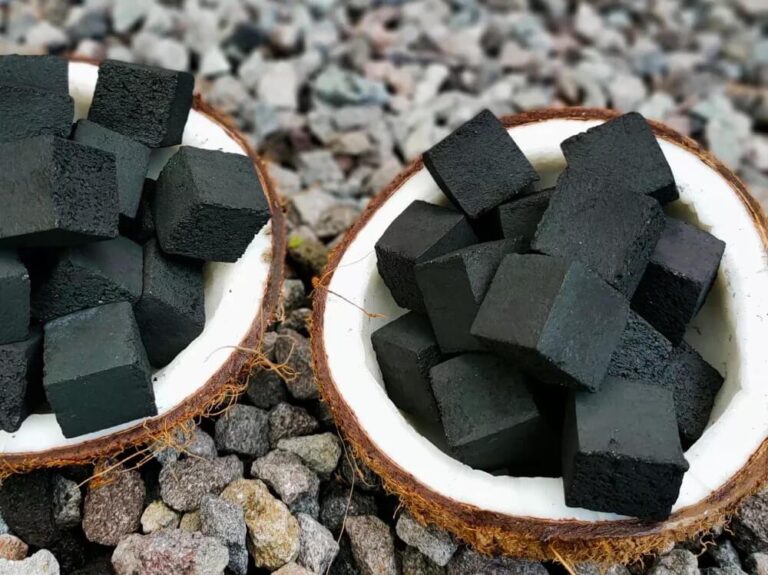Welcome to our blog dedicated to exploring innovative solutions for sustainable energy. In previous articles, we have covered topics such as making coconut charcoal briquettes and integrating briquettes into everyday life.
This article will discuss an interesting and potentially groundbreaking idea: biomass briquetting as an alternative energy source.
Biomass briquettes are a sustainable energy solution that results from compacting organic materials such as sawdust, straw, or agricultural waste into a solid combustible form.
With a focus on reducing dependence on fossil fuels that are becoming increasingly scarce, the use of biomass briquettes offers a novel approach to addressing and preventing future energy needs.
Moreover, prioritizing biomass briquettes is in line with the imperative to preserve the environment and encourage the use of environmentally friendly energy sources.
Unlocking Potential: Understanding the 3 Elements of the Rise of Biomass Briquettes as Alternative Energy
In this guide, we have gathered important information about biomass briquettes, why they are emerging as an alternative energy source and their advantages. If you are curious, stay tuned to this blog to learn more, let’s check it out:
1. explanation of biomass briquettes
In some previous blogs, it has been explained that biomass briquettes are one of the traditional alternative fuels that are environmentally friendly and renewable.
Did you know that the materials needed to make these briquettes are quite easy to find and affordable?
The increasing energy demands of modern life raise concerns about the accelerated depletion of fossil fuels.
This is due to the excessive use of fossil fuels, which is triggered by uncontrolled human behavior in utilizing them.
As a result of this problem, experts in various fields began to search for and research new energy sources that could provide a solution in the event of fossil fuel extinction.
They discovered that biomass briquettes have great potential as an environmentally friendly replacement solution.
Biomass refers to organic matter derived from biological sources, such as plants, algae, or the organic remains of animals.
It covers a wide range of materials, from wood and straw to agricultural waste, food waste, and municipal waste.
Biomass has the capacity to become an energy source for producing electricity, heat, or fuel through a number of processes such as combustion, fermentation, pyrolysis, or gasification.
The use of biomass as an energy source is often considered to be more environmentally friendly when compared to fossil fuels due to its renewable ability through the process of photosynthesis.
Moreover, the utilization of biomass can aid in reducing greenhouse gas emissions and lessening dependence on fossil fuels.
The use of biomass is not only limited to energy, but briquettes can also be extended to a variety of benefits to other sectors such as the chemical industry, building materials, as well as raw materials in the production of food and animal feed.
We will explain the materials that can be used to produce biomass briquettes in the next section.
Three Waste Materials Used to Make Biomass Briquettes
1. Food Waste
a. Unused Vegetable and Fruit Scraps
We can use unused vegetable and fruit scraps, such as banana peels, orange peels, or wilted leaves, to make biomass briquettes.
b. Food Scraps from the Kitchen, Such as Leftover Rice, Vegetables, or Meat
There is a lot of organic waste generated by cooking and food scraps from the kitchen, which can be reused as biomass briquettes, examples include leftover rice, wilted vegetables, and small pieces of meat.
c. Eggshells and Egg Scraps
Utilizing eggshells and egg scraps, which are commonly discarded, can produce raw materials for biomass briquetting, which then becomes an alternative energy source from kitchen waste.
d. Coffee Grounds and Coffee Scraps
Biomass briquettes can be produced using unused coffee grounds and coffee scraps. By processing these coffee wastes, we can reduce waste and produce a useful energy source.
e. Leftover Bread or Other Bakery Products
Utilizing leftover bread or other bakery products as raw materials for biomass briquettes is an effective method to recycle food waste and generate useful energy
2. Natural Waste
a. Dry Leaves from Trees
Collecting and processing dried leaves from trees as a base material for biomass briquettes not only offers an efficient solution for organic waste management but also helps reduce the open burning of waste, thereby generating environmentally friendly energy.
b. Dried Grasses: Utilizing Agricultural Waste for Biomass Briquetting
Utilizing dry grasses, commonly regarded as agricultural waste, in biomass briquetting not only aids in managing land waste but also offers an effective source of renewable energy as an alternative fuel.
c. Wood Dust from Tree Pruning or Felling
Utilizing sawdust from tree pruning or felling enables the creation of efficient and sustainable biomass briquettes.
This practice not only reduces waste in the wood industry but also capitalizes on sawdust’s high energy content, making it an ideal primary raw material.
d. Straw from Agricultural Crops
Straw, often considered a waste residue from agricultural activities, can be used as an efficient and sustainable biomass briquette material.
Thus, this straw processing not only provides added value to agricultural waste, but also encourages environmentally friendly farming practices.
3. Urban Waste
a. Kitchen Waste Utilization: Biomass Briquettes Production from Organic Kitchen Waste
Biomass briquettes can be produced from organic kitchen waste, including fruit peels, unused vegetables, and other discarded food items.
b. Trimmed Leaves and Branches from City Parks
Leaves and branches trimmed from city parks serve as ideal materials for biomass briquetting, making efficient use of the abundant green waste generated during the maintenance of urban green spaces.
c. Utilization of Green Waste: Converting Unwanted Plants and Grass from Urban Areas into Biomass Briquettes
Taking unwanted plants or grass from urban areas and converting them into biomass briquettes is a way to reduce the amount of waste and provide a new renewable energy option.
d. Waste from Traditional Markets: Unsold Vegetables and Leftover Fruits
Traditional markets generate significant amounts of organic waste, including unsold vegetables and leftover fruits.
In addition, by processing these organic waste into biomass briquettes, it can effectively solve the waste disposal problem while generating clean energy.
e. Waste from Restaurants, Cafeterias, or Other Dining Establishments
Dining establishments, including restaurants, cafeterias, and similar facilities, typically generate substantial organic waste, comprising food scraps and unused ingredients.
These materials can serve as feedstock for biomass briquettes, promoting sustainable practices and improving waste management.
2. Why Biomass Briquettes Are an Alternative Energy Source
It is a well-known fact that biomass briquettes have a composition made entirely of organic materials. The use of briquettes as an alternative energy source is gaining popularity for the following reasons:





